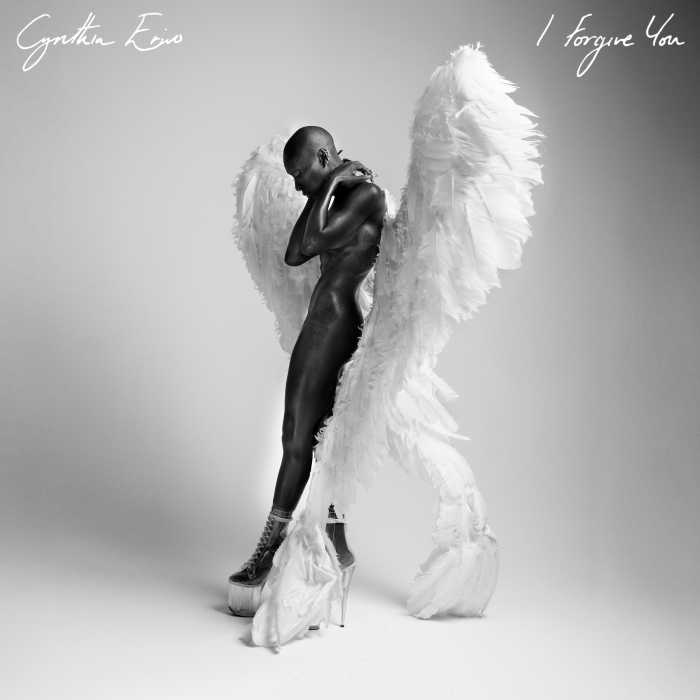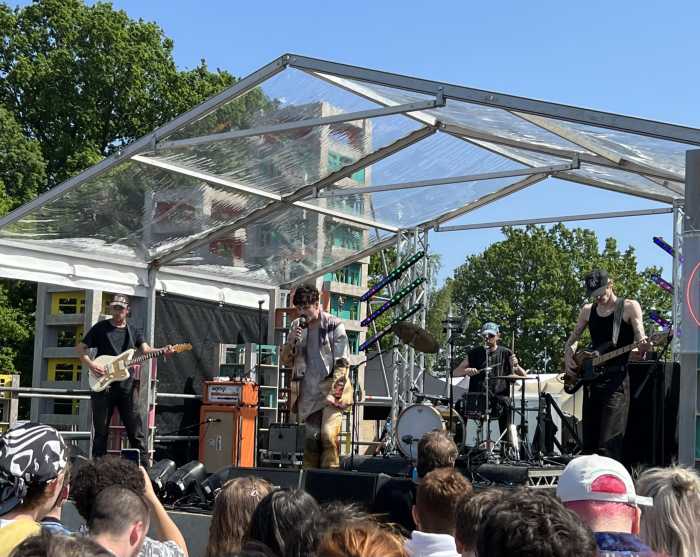BY BRIAN MCCORMICK | The availability of new media technology has been reshaping live dance and performance for more than a generation now. Video, in particular, and digital technologies such as motion capture and 3D animation are increasingly integrated into a genre primarily focused on the living body. With few notable exceptions, this integration has fallen short, with the flesh being overwhelmed by the electronic signal – without intention.
But Gideon Obarzanek's “Glow,” like “Corrupted,” performed as part of BAM's Next Wave Festival in 2001, rises to the challenge with literally sparkling results. Co-presented with the Joyce Theater at The Kitchen February 7-10, Obarzanek's company Chunky Move filled an audience of dance insiders with wonder at a press and industry showing on February 6. For those who became fans of the company after seeing the Bessie-winning “Tense Dave” at Dance Theater Workshop in 2005, and lost enthusiasm after their unsurprising “I Want to Dance Better at Parties,” “Glow” definitely restores some of the luster.
Chunky Move's “Glow” burns bright and fades quickly.
A solo in which the dancer's movements interact live with proprietary motion-tracking technology developed by Frieder Weiss, “Glow” is a gorgeous visual experience, performed on a white square, with audience members on all sides. The soloist, Kristy Ayre, slinks across the floor in her one-piece crochet knit ecru leotard with glitter thread. From above, controlled live by projectionist Nick Roux, lines crisscross and travel across the floor. Animated shapes surround the dancer like virtual cocoons; patterns radiate outward from her body like a corona, accompanied by crackling static audio (music and sound design by Luke Smiles). Spirograph designs – overlapping, repeating, and tightly spaced geometric patterns in arcing swirls spilling across the central space – seem to emanate from her arms and legs as she slices and slides.
The movement suggests evolution from the primordial soup, a creature crawling like a lungfish, quickly pattering across the floor in hunched shape, like a crab with invisible legs. Arms and legs begin to dart out, slicing and sweeping in awkward exploration, the bars of projected light expanding in width as the axis of limb and luminosity.
If the piece had been nothing more than this, it could have been a success, despite its short, 30-minute duration. (Two hours may generally be thought of as “too long,” unless you're going to the ballet, but half-an-hour is half an evening.) But it's never really about time so much as it is about content and after about 20 minutes, the piece collapsed from its own weight.
Somewhere about midpoint, shortly after Ayre became upright, she began vocalizing, emitting a kind of inhaling high-pitched shriek. The evolution theme shifted toward a hackneyed and binary narrative of sorts. Suddenly, the white and bluish projections became black, ominous shapes, and it was impossible, going forward, not to wince at the similarities to the movie “Ghost,” black shapes amassing toward our anti-heroine as she releases a screech of death or possession. Whether this was intended or not, it was a shocking lurch toward drama that wasn't needed. As a pure dance piece, “Glow” was brilliant.
Theatrics worked extraordinarily well in “Tense Dave,” a collaboration with a theater director and a choreographer. They were also the facile lynchpin of “I Want to Dance Better at Parties.” Unfortunately, in the case of “Glow,” theatrics got combined with genetic material and instead of something pure and novel, an awful hybrid emerged.


































